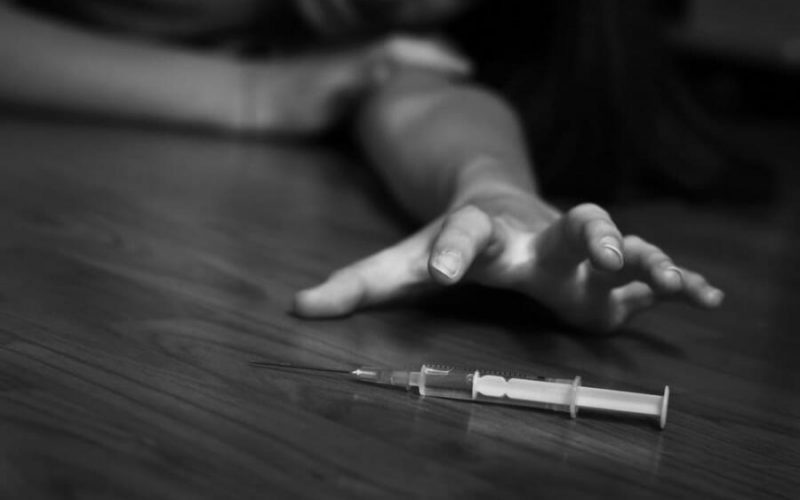Deciding whether to go into rehab or not to overcome Speedball Addiction is a challenging decision to make. People and their families might have more reasonable expectations and a better grasp of the rehabilitation process when they are aware of success rates. It is an essential tool for selecting the best course of treatment and establishing realistic objectives.
Understanding the success rate of Speedball treatment ultimately enables people to make knowledgeable decisions, promotes reasonable expectations, and emphasizes the significance of continued support and dedication to recovery. It is an effective technique for creating openness, building confidence in the healing process, and encouraging those struggling with Speedball addiction.
Why It’s Challenging to Recover from Speedball Addiction
Speedball is a highly addictive and risky drug mix that combines cocaine and heroin. These drugs have different outcomes when combined and administered. Cocaine is a stimulant, increasing alertness and energy, but heroin serves as a depressive, promoting relaxation and bliss. The attraction of Speedball is found in the amplified high it produces as a result of the drugs’ inhibitory effects. The hazards associated with this combination, though, include overdosing and cardiovascular strain. Effective treatment, which necessitates tailored treatments considering the unique obstacles and risks associated with Speedball addiction, demands an understanding of these concerns.
Speedball addiction poses particular difficulties that make it challenging to overcome. First off, the heroin and cocaine in a Speedball combine to provide an extremely potent and intense high that increases the risk of addiction. An intense and delightful sensation is produced by the potent euphoria and simultaneous stimulation, which can quickly result in psychological reliance. When used together, the addictive properties of both drugs are enhanced, making it more difficult for users to overcome their Speedball addiction.
Second, the distinct impacts of cocaine and heroin in a Speedball present difficult physical and mental obstacles during the recovery process. Heroin is an opioid, hence stopping use results in physical dependence and withdrawal symptoms. These symptoms can be uncomfortable and painful, which frequently prompts people to revert to drug usage to find relief right away. The energizing effects of cocaine can also cause increased cravings and a sense of urgency to use the substances once more.
The strong dependence of the mind and body to Speedball makes it harder to free oneself from addiction. To successfully treat Speedball addiction, patients need a multifaceted approach that addresses both the physical and psychological elements of addiction, as well as continuing support and relapse prevention techniques.

What are the Factors Influencing Success Rates of Speedball Rehab
Physique and Genes
The likelihood that rehabilitation will be successful is greatly influenced by genes. Individual differences in drug metabolism, brain chemistry, and the body’s reaction to therapy are influenced by genetic variables. An individual’s propensity to addiction, their capacity for processing and removing substances from their systems, and their reaction to particular medications used in rehab may all be impacted by certain genetic variants.
Knowing a person’s genetic makeup can enable treatment regimens to be tailored to enhance effectiveness and reduce the possibility of negative side effects. Insights into a person’s genetic predispositions gained from genetic testing and analysis can help addiction specialists customize therapies, drugs, and support systems to each individual’s specific needs, increasing the overall success rate of rehab.
Psychological Factors
The success rate of rehabilitation is significantly influenced by psychological variables. Substantial psychological problems including trauma, anxiety, sadness, or unresolved emotional issues are frequently linked to addiction. These psychological elements may affect a person’s drive, openness to change, and capacity for coping with triggers and cravings.
Long-term recovery depends on addressing and treating these psychological issues in addition to addiction. Individuals can improve their general psychological health and resilience by using therapeutic interventions such as individual counseling, group therapy, cognitive-behavioral therapy, and holistic methods.
The success rate of rehab can be greatly increased by treating and controlling these psychological aspects, as people will be better able to handle the difficulties of recovery and sustain sobriety in the long run.
Personal Motivation
The level of personal drive is a key factor in deciding how successful treatment is. A key component of the rehabilitation process is the desire and commitment to change. Intrinsically motivated people are more likely to actively participate in treatment, follow through on advice, and make the necessary lifestyle adjustments. To overcome obstacles, failures, and cravings that could occur during the rehabilitation process, motivation is essential. It gives people the ability to create objectives, stay focused, and persevere under trying circumstances.
A helpful treatment environment and support from loved ones, as well as internal variables like self-reflection and resolve, are frequently combined to build personal motivation. The success rate of treatment can be greatly increased by utilizing and fostering individual drive, resulting in long-lasting recovery and a healthier, drug-free existence.
Addiction Treatment Factors
The success rate of recovery is greatly influenced by a variety of addiction treatment elements. An individual’s road to recovery is substantially impacted by the kind and caliber of care they get. The overall success of rehab is influenced by several variables, including the rehabilitation program selected, the length of the program, and the availability of medical and psychological assistance.
The likelihood of good outcomes is increased by evidence-based therapy modalities that are adapted to each patient’s unique demands. Comprehensive aftercare programs, relapse prevention techniques, and continuing support networks are also essential for sustaining long-term sobriety. The availability and continuity of treatment services, together with the knowledge and compassion of addiction specialists, foster a healing and growth-promoting atmosphere, ultimately raising the success rate of recovery.
What are Available Treatment Options for Speedball Addiction
Detoxification and withdrawal management
Detox is the first part of any rehab program. It involves eliminating the toxins from the body caused by addiction. Managing withdrawal symptoms is also part of detox, and getting medical supervision is best for the patient’s safety. It is often the initial step in the treatment process. During detoxification, individuals undergo supervised withdrawal, with medical support and interventions to ensure safety and alleviate discomfort.
Medications may be used to mitigate withdrawal symptoms and stabilize patients physically. However, it is important to note that detoxification primarily addresses the physical aspects of addiction, and further treatment is typically needed to address the psychological, emotional, and behavioral aspects of substance abuse.
Inpatient rehabilitation programs
An extensive addiction treatment program known as inpatient rehab, sometimes known as residential rehab, requires participants to remain in a structured institution for a predetermined amount of time. Inpatient treatment offers an intensive experience with 24-hour care and support in a therapeutic setting. This reduces external triggers. It provides a variety of services, such as counseling, interventions, medical and psychological support, and activities that foster skill development.
The period can range from a few weeks to several months. Inpatient rehab offers an organized and encouraging environment for specialized care, the development of coping mechanisms, understanding addiction, and laying the foundation for sustained sobriety.
Outpatient rehabilitation programs
Outpatient rehab is a type of addiction treatment that enables patients to continue living at home and going about their regular lives while receiving therapy and support. Individuals in outpatient rehab, as opposed to inpatient rehab, participate in regularly scheduled therapy sessions and treatment programs during the day and go home at night. Outpatient treatment is appropriate for people with less severe addictions or obligations that prevent them from attending residential treatment since it is flexible and accessible. It offers a variety of services, such as counseling, education, support groups, and individual and group treatment. Depending on the needs of each patient and their treatment goals, the frequency and length of outpatient sessions vary.
Medication-assisted treatment and Behavioral therapies
Your doctor can combine behavioral therapies and medicine in helping you recover from Speedball addiction. This method is called medication-assisted treatment (MAT). Drugs used in MAT lessen cravings and withdrawal symptoms, aiding in the healing process. Behavioral therapies that address underlying psychological problems, such as CBT and MI, assist people in creating better-coping systems. In MAT, therapy and medication are combined to offer a thorough and tailored approach to addiction treatment, enhancing results and lowering relapse rates. For safety and efficacy, MAT must be individually tailored to each patient and closely supervised by medical specialists.

How to Evaluate the Success Rates of Rehab
Assessing numerous parameters to ascertain the efficacy of the treatment is required to evaluate the success rate of rehab. First and foremost, it’s critical to gauge the percentage of people who have finished a treatment program and have abstained from or reduced their substance usage. Self-reporting, drug testing, or monitoring treatment results over a predetermined time frame are all options for doing this.
Additionally, changes in the person’s general functioning and quality of life are considered when assessing the success rate. This includes assessing changes in one’s physical and mental health as well as interpersonal relationships, professional and academic achievements, and financial and legal stability. We can gauge the degree to which rehab has aided people in rebuilding their lives and regaining control over their addiction by evaluating these areas.
It is also crucial to take into account how often people relapse and their capacity for long-term recovery. Relapse is a typical occurrence in addiction, however to assess the success rate, it is necessary to look at the relapse prevention techniques taught in rehab and the clients’ aptitude for using them in their everyday lives.
The opinions of patients and their families are also very important in determining how successful treatment is. Their viewpoints offer priceless information about their experiences, level of treatment satisfaction, and perceived advancements.
In conclusion, judging the effectiveness of rehab entails looking at statistics on abstinence, gains in overall functioning, relapse rates, and patient and family input. We can fully comprehend the efficacy of the rehabilitation program by taking into account these elements, and we can then make the required adjustments to improve outcomes.
